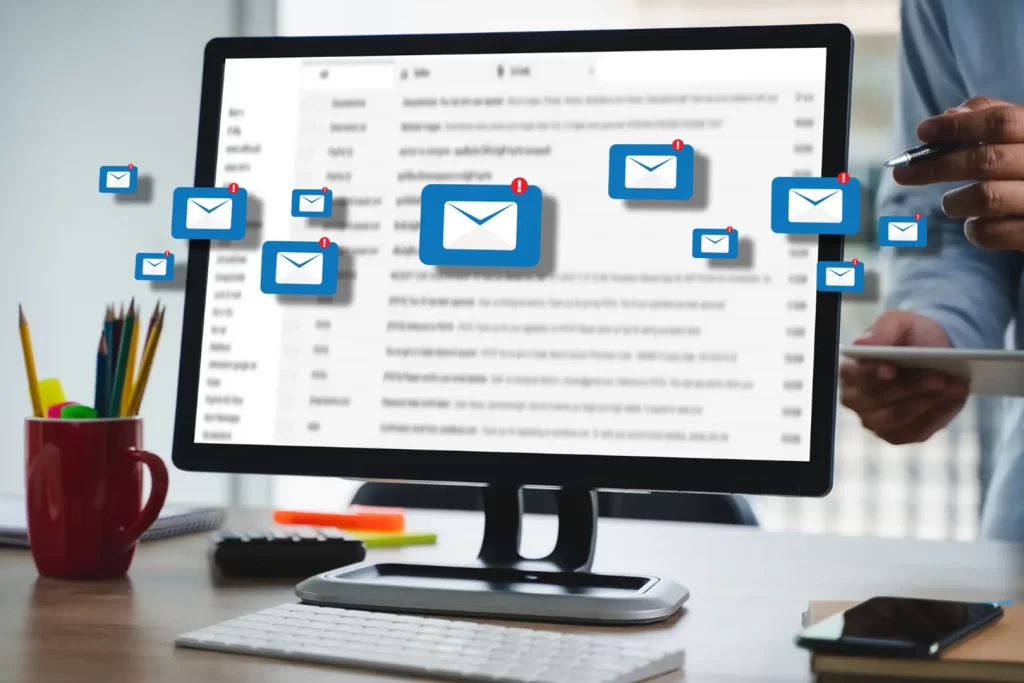Quite frankly, the major difference between Personalized emails and Cold emails is that one aims to connect, the other aims to nurture. As a sales and marketing personnel, it is important to know which one is which. Over the years, with the increasing need to pitch one’s service or brand, cold emailing has become very popular, but bad practices make this type of marketing difficult to convert. While personalized emailing seems like an easier alternative, the major point is the offer your bait or lead magnet carries.
In this article, we would be putting an end to the Personalized vs Cold emailing war, by measuring the conversion rate, leaving you to decide which would prove more effective for you depending on your marketing goals. Remember we earlier highlighted the key differences, right? But that’s just on the surface.
Let’s dig deeper.
What Is Personalized Email?
How do you feel when you go to a strange place, or a gathering where you know no one, and all of a sudden you hear your name? You start to feel the rush of excitement, right? Even if you don’t like the person, or you don’t know the person, that singular act alone automatically endears the person to you. Who knows, that could be the start of a budding friendship.

Let me ask this one, how do you feel when your bank or some brand you buy from sends you a happy birthday wish? Obviously, it rings- E for Effort and Excellence!
Now that is how personalized emails make your customers, or clients feel. Your clients start to feel like they know you already, they want to give you their attention and are willing to let you nurture them till they give you all they have.
A personalized email is a form of email marketing where you use clients’ data to your advantage. This means it requires a good amount of research. With these clients’ data, you create a better and more tailor-fitted user experience for your customers. It gives the marketer, the ease to target specific people with specific interests, also with offers, content, and information.
The goal of this type of email is to create a personal experience, and ultimately build trust and brand loyalty. A personalized email should feel like it is coming from a friend, and not give off the “They just want my money vibe”. That’s why it usually uses the first names of prospects embodied in the mail and this is possible because you must have either researched the prospect enough or have asked them for their emails via a sign-up form. For me, I see personalized emails as love letters in marketing form, and that is what they should be.
The key to good personalized email should be to build anticipation, gain relevance, and drive a personal feel. It is important to note that the fact that you used their first name is not the only basis for personalization. There are levels to this thing, but that is outside the scope of today’s article.
What Is A Cold Email?
Cold Emails sometimes come off cold just as the name implies. Mostly because you jump right into pitching to your leads about your offer without doing any research to know them more and make them feel understood. I’m about to drop an example (I feel like most ladies can relate to this very well) which totally depicts what cold emails are.
Let’s say a guy who you cannot remember ever meeting gets your number from a random source without your consent, calls you on the phone and goes “Hi I am Micheal, I like you so much, will you go on a date with me? ” I’m sure we’ve seen this play out a lot, over the phone or on WhatsApp.

While there is nothing wrong with a guy going the extra mile, it’s different when you encounter a guy this way, from nowhere. You automatically let your guard up right? Now, this is cold emailing in relationship form.
A cold email is another type of marketing strategy where you send emails to clients you don’t know and who didn’t directly give you their emails. They also do not have any prior knowledge about you or your brand. Most emails to which cold emails are sent to are gotten from external lead generation software or tools. Without the consent of the prospect. This type of mail works when you wish to gather lots of leads for a sales campaign.
As a marketer, you must have done your research and developed a list of prospective clients with their emails you would want to reach out to, but you do not know how to go about it. I understand that both online and offline, everything starts with a conversation, cold emailing is a way to converse with clients that have no prior interaction with you.
If done right, these clients can move from strangers to prospective customers, but there is a but, if done right. But these days, a lot of people still don’t get that cold emailing has its strategies, so you see bad tactics with mails ending up in spam.
The trick with cold emailing is to put yourself in your prospective client’s shoes, if an email like the one you are about to send enters your mail, will you read it or ignore it? That way you are going to ensure your pitch gets read. But we are not talking cold emailing tactics in this post, are we?
Now that we know what the 2 types of emails are, let’s see which type converts more, I mean that is the aim of this article, after all, THE BATTLE OF CONVERSION RATE. Let’s keep it going.
THE BATTLE OF CONVERSION RATE
Now let’s battle with numbers and facts. Studies show that personalized emails have 2.5 times more click-through rates and are 6 times more likely to drive a conversion. In further research, 73% of prospects say they would rather do business with brands that are more detailed about them, and give them a personalized experience.

In fact, according to campaign monitor, further research shows that emails with personalized subject lines are 26% more likely to be opened.
This means personalization email is based on the principle of people like to feel special and recognized-pure human psychology. Due to the success of personalized emails, brands and companies have moved on to using that customer data, to create personalized marketing campaigns.
On the other hand, cold emails have an average conversion rate of 1%, and if done right, can be increased to 10%. Still not up to that of personalized emails though, and this is according to Task drive. With these statistics, it means that if you message 100 people, you will only get a response from 1 person.
So if you want to achieve success, you would have to get more perspectives to message, to get a higher success rate, leading to more work, increased risk of bounce rate, and more marketing budget, because you must have paid to get those emails you are cold mailing in the first place.
CONCLUSION
Dear marketing and salespeople, while we cannot decide for you which to choose based on a number of internal factors, we can only hope the numbers speak for themselves. Because, in our line of work it is a numbers game, and we are ruled by numbers.
So while both personalized and cold emails have their perks, they have their pros and cons, and strategies for success, but then the numbers do not lie. Feel free to drop comments or any questions you might have. I’ll gladly oblige.

